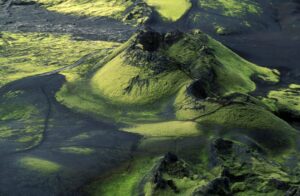This magnitude 7.8 quake was the largest natural disaster in the history of Argentina, which caused the death of 10 percent of San Juan’s population.
In the evening of January 15, 1944, the city of San Juan, Argentina, was hit with a magnitude 7.8 earthquake. It destroyed a large part of the city and killed 10,000 people, approximately 10 percent of the total population at that time. The event is generally considered to be the largest natural disaster in the history of Argentina. San Juan is located in the mountainous area in the west of Argentina, one of the most earthquake-prone regions in all of South America.
The earthquake’s epicenter was twenty miles north of the city. About 90 percent of all buildings were destroyed, probably a consequence of poor construction standards. There was considerable discussion as to whether the city should be moved to a safer location but, in the end, it was decided to undertake extensive reconstruction on the existing site.
Prior to the earthquake, many of San Juan’s houses were made of adobe. The reconstruction that was necessary following the quake prompted the creation of a building code that respected modern knowledge of earthquakes. This code included use of brick and concrete one-story houses and wider sidewalks and streets. At the start of the reconstruction, emergency homes were built for the population with funds of the national state. This was the first state-directed massive construction plan in Argentina and it continued under different presidents.
The earthquake had caused many families to scatter in the confusion, leaving many orphaned children, and created a new social challenge for the city’s administrators. There was also the challenge of matching the physical reconstruction with the development of emergency plans for future earthquakes. Unlike other natural events, an early warning system does not make sense for earthquakes, because they are not predictable. Prevention strategies are the only tools available to keep hazards from becoming catastrophes.
The city of San Juan is located in the area of highest seismic risk in the country. This region experiences a strong earthquake approximately every fifty years. Today, as a result of the reconstruction process following the 1944 earthquake, a high percentage of the city’s buildings meet the standards set in the new safety regulations. As of 2006, San Juan had a population of 400,000.
Two-thirds of its homes and all of it public institutions were built under these regulations. This, however, leaves more than a third of non-seismic-resistant houses. A study on seismic vulnerability, conducted by the National University of San Juan in 2005, showed that 28 percent of the surrounding neighborhoods present medium risk, and 20 percent of the city can be classified as high or very high vulnerability.





















